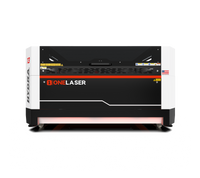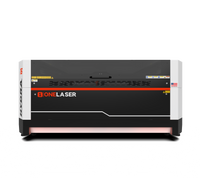When you invest in a OneLaser Hydra, you’re not just buying a laser engraving machine — you’re investing in a professional-grade system designed for long-term performance, reliability, and safety.
While many brands prioritize low-cost assembly, the OneLaser Hydra is built to meet U.S. electrical and safety standards, engineered from the ground up for industrial reliability. One question customers often ask is:
“Why does my Hydra come with a NEMA 5-20P plug instead of a regular 15A household plug?”
At first glance, this difference might seem inconvenient. But in reality, it’s one of the most important engineering decisions behind Hydra’s superior performance.
Key Takeaway
This article will break down the electrical design principles of the OneLaser Hydra, explain why it uses a NEMA 5-20P plug, and show how this ensures both safety and future upgrade capacity for your laser engraving journey.
1. The Core Philosophy Behind OneLaser Hydra
Every component of the OneLaser Hydra Series reflects a professional engineering approach that prioritizes safety, stability, and scalability.
Unlike hobby-grade lasers that cut corners with inconsistent wiring and lower-rated components, Hydra machines are built to industrial-grade specifications. They are designed for continuous operation, high-speed cutting, and integration of multiple laser modules — all of which require a reliable electrical foundation.

The Hydra’s power system adheres to the highest U.S. electrical standards, including NEMA (National Electrical Manufacturers Association) specifications. This means every connection, cable, and component is selected to handle higher electrical loads safely and efficiently.
2. Why the Hydra Requires a 20A Circuit
Most home appliances, such as microwaves or toasters, use standard 15A outlets. These are adequate for small devices but not ideal for high-performance laser systems.
The OneLaser Hydra operates on a 20A-rated circuit because it’s engineered for professional-grade production and future laser upgrade capacity.
Here’s why:
2.1 Higher Power Demand
Hydra machines are not ordinary lasers — they integrate powerful CO₂ and RF laser modules, high-speed motors, and advanced motion systems. These components draw more current during cutting or engraving cycles, especially at maximum speed.

2.2 Stable Power Delivery
To maintain consistent performance, the Hydra requires stable voltage under heavy loads. A 20A circuit provides this stability by minimizing voltage drop, ensuring your laser receives full power without fluctuations.
2.3 Scalability for the Future
The Hydra’s modular system is designed to support upgrades and dual-laser configurations. A 20A electrical foundation provides the headroom needed for additional modules, eliminating the need for rewiring when you expand your setup.
3. Understanding the NEMA 5-20P Plug
The Hydra comes equipped with a NEMA 5-20P plug — a U.S. electrical standard for equipment rated at 20 amps.
This plug has a unique feature: the neutral blade is T-shaped. This design isn’t aesthetic — it’s a safety feature. It physically prevents the plug from being inserted into a 15A outlet, which could otherwise lead to overcurrent, overheating, or fire hazards if the circuit isn’t rated for 20A.

Benefits of the NEMA 5-20P Plug:
- Safety by design: Prevents connection to undersized circuits.
- Stable performance: Ensures consistent current delivery.
- Durability: Engineered for heavy-duty operation and longer lifespan.
By using a 5-20P NEMA plug, OneLaser ensures every Hydra operates within safe electrical limits — protecting both your machine and your workspace.
4. The Engineering Science Behind the 20A Design
From an electrical engineering perspective, the Hydra’s 20A system offers multiple advantages beyond just higher current:
4.1 Lower Voltage Drop
A 20A circuit typically uses 12-gauge copper wire, which has lower resistance compared to 14-gauge wire used in 15A circuits.
This means less energy loss during operation and a more stable power supply — essential for precision engraving and consistent laser output.
4.2 Thermal Safety Margin
Running close to 15A on a 15A line can cause wire heating, breaker fatigue, and decreased lifespan of both the wiring and connected equipment.
A 20A circuit provides a buffer zone, keeping the system well within safe temperature limits during continuous operation.
4.3 Future-Proofing for Expansion
The OneLaser Hydra supports Modular Upgrade Hybrid System™ (MUHS) technology — allowing users to add new laser modules or upgrade their existing ones.
The 20A design ensures you won’t need to rewire your workspace or replace breakers when upgrading, saving time and cost in the long run.
5. How to Set Up a 20A Circuit for Your Hydra
If your workspace doesn’t already have a 20A outlet, installing one is straightforward and highly recommended for full performance.
Here’s what’s typically required:
- Install a 20A single-pole breaker in your electrical panel.
- Run 12-gauge copper wiring (rated for 20A) from the breaker to the outlet.
- Install a NEMA 5-20R receptacle, which matches the Hydra’s plug type.
- Label the circuit as “Dedicated 20A – Laser Use Only” to prevent overload.
In commercial or production settings, 20A outlets are standard. For home users, a licensed electrician can perform this upgrade for around $250–$350, depending on wiring distance and wall access.
6. Can You Use an Adapter? (Temporary Only!)
For short-term operation, you can use a NEMA 5-20P to NEMA 5-15R adapter. These adapters, rated for 20A and using 12AWG, 3-wire construction, allow you to connect your Hydra to a 15A outlet temporarily.
However, this should never be a long-term solution.
While the adapter may handle the electrical load, your wall outlet and home wiring likely can’t. Most residential outlets use 14-gauge wire and are rated for 15A. If the Hydra draws near or above 15A for extended periods, you risk:
- Heat buildup in wiring
- Outlet damage or melting
- Breaker tripping
- Potential fire hazards
For long-term reliability and safety, upgrading to a true 20A circuit is the only recommended option.
7. The Cost of Doing It Right — and Why It’s Worth It
At first, spending a few hundred dollars on electrical upgrades might seem unnecessary. But when you consider the investment value of your Hydra, it’s a smart move.
- You protect your laser’s internal electronics and laser tube.
- You maintain consistent engraving performance.
- You avoid costly repairs or unsafe operating conditions.
- You future-proof your workspace for upgrades or new modules.
A dedicated circuit isn’t just about compliance — it’s about ensuring your OneLaser Hydra performs at its absolute best, every single time.
8. How Electrical Design Impacts Performance
Power delivery directly affects how your laser engraver performs. With a 20A circuit and NEMA 5-20P connection, you’ll notice:
- Faster startup and smoother motion control.
- Stable laser power even during long jobs.
- Reduced wear on electrical components.
- Improved lifespan of both CO₂ and RF laser tubes.
The Hydra’s electrical system was carefully engineered to handle these demands. It’s not overbuilt — it’s correctly built, following the same electrical standards trusted in professional manufacturing environments.
9. The Future of Scalability and Upgrade Potential
The Hydra’s modular architecture means users can easily add or switch between laser types — from CO₂ to RF metal tubes — without redesigning the machine or electrical system.
This future-ready engineering allows OneLaser users to:
- Upgrade power modules as their business grows.
- Run dual-laser configurations for cutting and engraving simultaneously.
- Integrate accessories like rotaries, air assist, and camera modules — all without compromising safety.
Because the Hydra’s power system already supports 20A capacity, it’s prepared for whatever innovation comes next.
10. Safety First — Always
At OneLaser, safety isn’t an afterthought. It’s engineered into every detail.
The Hydra Series not only meets U.S. electrical standards but also includes multiple layers of protection:
- Fully enclosed design prevents laser exposure.
- Automatic temperature monitoring stops operation before overheating.
- Grounded circuits prevent electrical faults.
- Built-in solenoid and airflow control enhance cutting efficiency safely.
- High-quality insulation and cable management reduce fire risks.
Combined with its robust power system, these features make Hydra one of the safest high-performance laser machines available today.

Conclusion
Owning a OneLaser Hydra means owning a machine that’s been designed with your safety — and your growth — in mind.
By adopting a 20A electrical standard and NEMA 5-20P plug, OneLaser ensures you’ll never have to compromise between performance and protection.
Whether you’re engraving wood, acrylic, glass, or leather, your Hydra’s power system guarantees smooth, reliable, and safe operation — ready to evolve as your creativity expands.
So, when you see that T-shaped plug on your Hydra, know that it’s not an inconvenience — it’s your assurance of professional engineering, long-term durability, and readiness for the future.

 Liquid error (sections/image-banner line 171): invalid url input
Liquid error (sections/image-banner line 171): invalid url input






